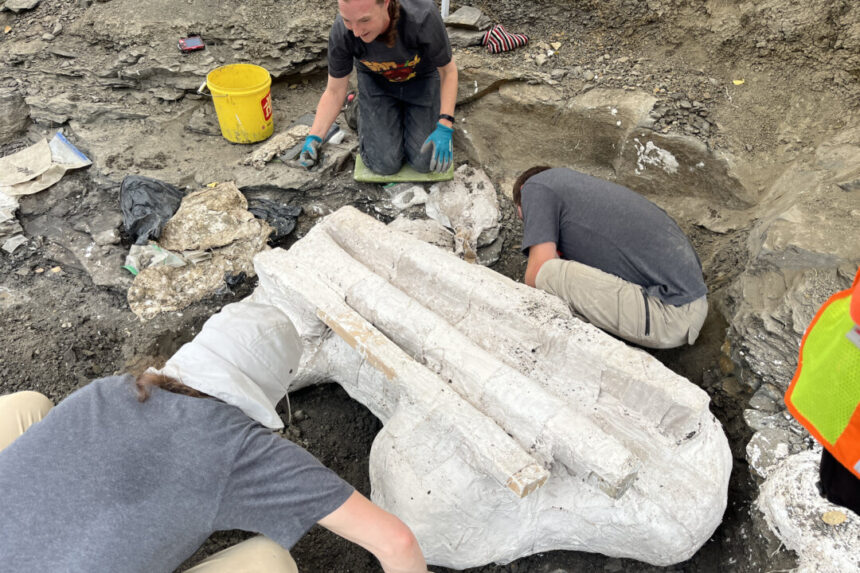More than 70 million years ago, a dinosaur roamed Alberta’s badlands with a big, bumpy, bony head the size of a baby elephant. Paleontologists near Grande Prairie recently unearthed its 272-kilogram skull, naming it “Big Sam.”
This adult Pachyrhinosaurus is the second plant-eating dinosaur found in a bonebed where a herd perished together on the edge of a valley, now located 450 kilometers northwest of Edmonton. The discovery includes hundreds of juvenile bones, indicating the presence of babies and adult dinosaurs among the larger adults.
Described as the smaller, older cousin of the triceratops, the horned Pachyrhinosaurus is unique to the Grand Prairie area and is similar in size to an Indian elephant and a rhino.
The bonebed, initially discovered by a high school teacher 50 years ago, is one of the densest dinosaur bonebeds in North America, with 100 to 300 bones per square meter. Paleontologists have been intermittently excavating the site for years, uncovering various dinosaur remains.
Big Sam’s extraction was challenging due to its entanglement with around 300 other bones. The well-preserved skull was found upside down and carefully lifted out with a crane for further study at the museum.
The excavation process involved plastering the skull, placing wooden planks for stability, and using a crane to lift it out. Despite the difficulty, the paleontologists were excited about the discovery and the opportunity to study this unique dinosaur further.
Please rewrite this sentence.
Source link





